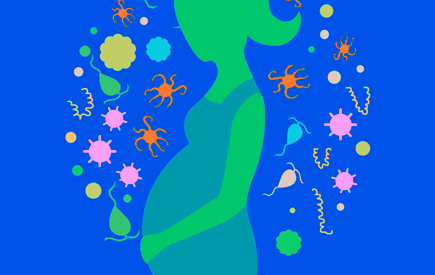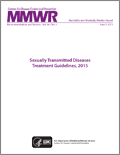What are STDs?
What are STDs?
Sexually transmitted diseases (STDs) are passed from one person to another through intimate physical contact – such as heavy petting – and from sexual activity including vaginal, oral, and anal sex. STDs are very common. In fact, CDC estimates 20 million new infections occur every year in the United States. STDs can mostly be prevented by not having sex. If you do have sex, you can lower your risk by using condoms and being in a sexual relationship with a partner who does not have an STD. STDs do not always cause symptoms, so it is possible to have an infection and not know it. That is why it is important to get tested if you are having sex. If you are diagnosed with an STD, know that all can be treated with medicine and some can be cured entirely.
There are dozens of STDs. Some STDs, such as syphilis, gonorrhea, and chlamydia, are spread mainly by sexual contact. Other diseases, including Zika and Ebola, can be spread sexually but are more often spread through ways other than sex.
STDs in the News
The First Friday of October is National Disease Intervention Specialists (DIS) Recognition Day (October 5, 2018)
- Dear Colleague Letter: A special thanks from Dr. Jonathan Mermin, National Center for HIV/AIDS, Viral Hepatitis, STD, and TB Prevention Director, and Dr. Gail Bolan, Division of STD Prevention Director
2017 STD Surveillance Report Finds Sharp Increases of Syphilis Among Newborns (September 25, 2018)
- Announcement from Dr. Gail Bolan: CDC’s STD Director on continued concerning increases in congenital syphilis
- Press Release: Newborn syphilis cases more than double in four years, reaching 20-year high
- Congenital Syphilis Graphic: Downloadable graphic for use in your materials
- The State of STDs Infographic: Customize this printable infographic with your local statistics
Breaking News from 2018 National STD Prevention Conference: New CDC data find that nearly 2.3 million cases of chlamydia, gonorrhea, and syphilis were diagnosed in the United States in 2017. Public health leaders, including from the Association of State and Territorial Health Officials (ASTHO), National Coalition of STD Directors (NCSD), and the University of Alabama’s School of Medicine – join CDC onsite to discuss the new findings and how to counter the country’s STD epidemic. (August 28, 2018)
- Press Release: New CDC analysis shows steep and sustained increases in STDs in recent years
- Infographic: Visual depiction of new STD data and the dangers of untreated STDs, as well as continued concerns about drug-resistant gonorrhea
Current Editions of STD Publications
Resource Spotlight
Advancing Electronic Case Reporting of Sexually Transmitted Infections: Technical Guidance for Public Health Departments – A document detailing case detection logic and the core set of case report data elements for EHR-based electronic case reporting (eCR) of chlamydia and gonorrhea. (March 15, 2018)
STD Prevention Resources – Handout with links to CDC resources for healthcare providers, individuals, STD programs and community-based organizations. (December 11, 2017)
STD Prevention Allocation Consequences Estimator – A tool created for state and local sexually transmitted disease (STD) programs to estimate the impact of changes in their budgets.
General STD Prevention Resources
- National STD Curriculum – An online modular learning experience that helps users learn how to manage STDs. It is continuously updated and integrates the most recent STD Treatment Guidelines. Free CME/CNE available. (November 1, 2017)
- The State of STDs in the United States: This *customizable* infographic highlights statistics for chlamydia, gonorrhea, and syphilis, as well as the populations most affected by these STDs, consequences when left untreated, and ways to prevent them
- Portions of the infographic are also available to share over social media
- STD Program Evaluation Tools & Trainings (STD PETT) – A collection of six online training modules and 21 downloadable resources providing step-by-step guidance to enhance STD program evaluation capacity. (October 2, 2017)
- Spotlight on CDC’s STD Prevention Work – Learn about CDC’s Division of STD Prevention and the specific ways we’re working to prevent STDs and promote sexual health. There is also a high resolution version for printing.
- Just Diagnosed? New fact sheet provides the three steps you can take if you were recently diagnosed with gonorrhea or chlamydia, including resources to help you talk to your partner.
- STD Risk and Oral Sex – This page provides an overview of health effects associated with oral sex.
- Sexual Health and Your Patients: A Provider’s Guide – Primary care providers can use this guide to better integrate sexual health conversations and related preventive sexual health services into routine adolescent and adult visits. It features tables and charts to help providers easily find key information, and was pre-tested with primary care providers.
- Expedited Partner Therapy (EPT): An Important STD Prevention Tool – An infographic to help patients and doctors understand how EPT works.
- KABI Chronicles: The Edge Motion Comic Series – An original, comic-based, serial drama following the lives of nine fictional high school and college friends as they navigate young adulthood, while also educating viewers about HIV and STDs.
- STD Prevention Success Stories – CDC works with local and state health departments to prevent the spread of STDs across the United States. These documents provide insight into innovative STD prevention programs and projects.
Drug-Resistant Gonorrhea Resources
- Drug-Resistant Gonorrhea: An Urgent Public Health Issue This animation details the history of drug-resistant gonorrhea in the United States, the dangers of untreatable gonorrhea, and why this issue must remain a top public health priority.
Syphilis Resources
- Syphilis Pocket Guide for Providers – Updated booklet for providers containing need-to-know details on the diagnosis, treatment, and prevention of syphilis.
- Reducing Rising Syphilis Rates: A Healthcare Provider’s Role – New video walks healthcare providers through the three key actions that they can take to help reverse the rising syphilis rates: Talk, Test, and Treat.
- Page last reviewed: October 5, 2018
- Page last updated: October 5, 2018
- Content source:


 ShareCompartir
ShareCompartir



























